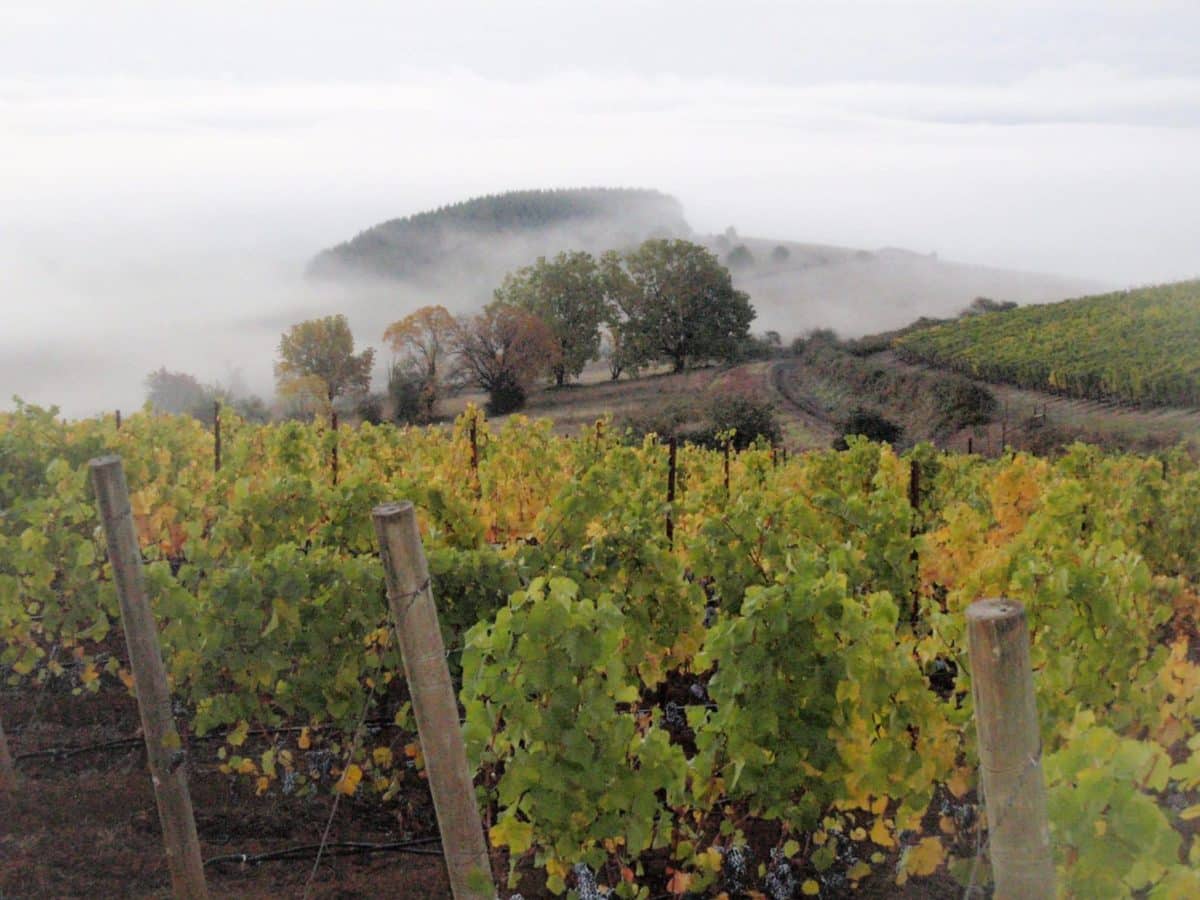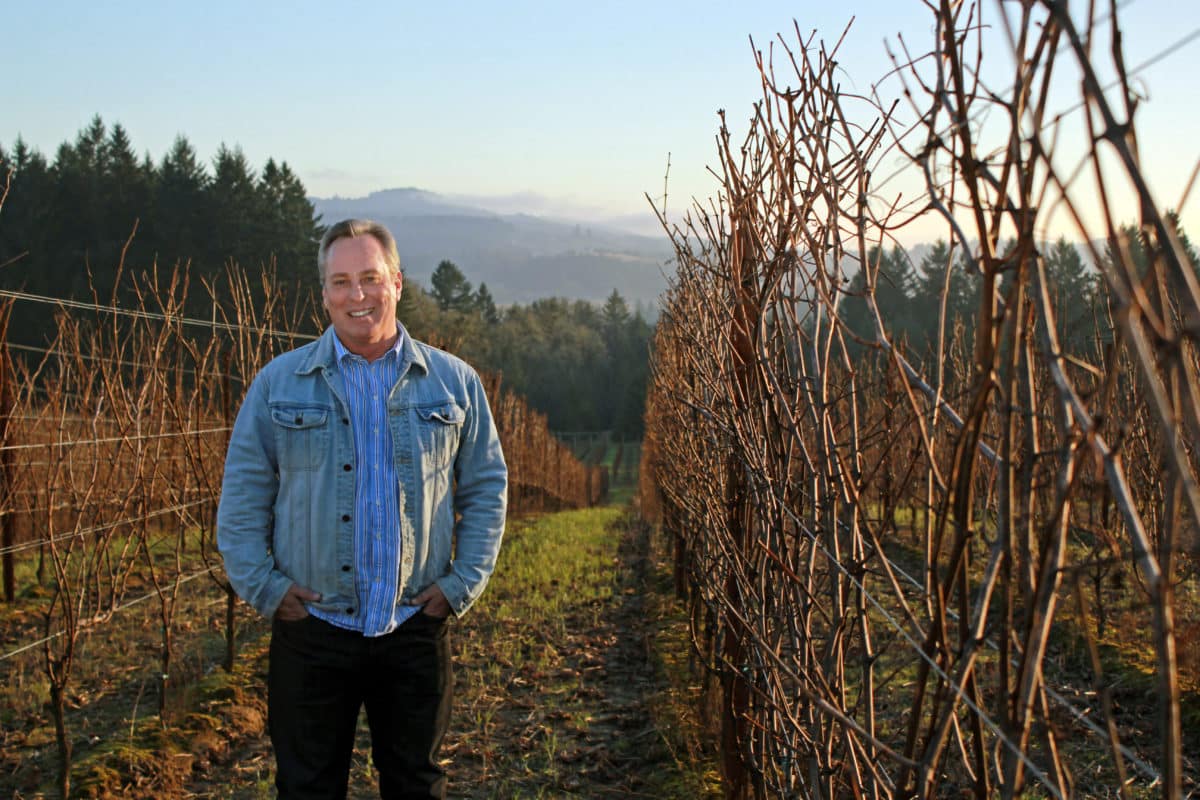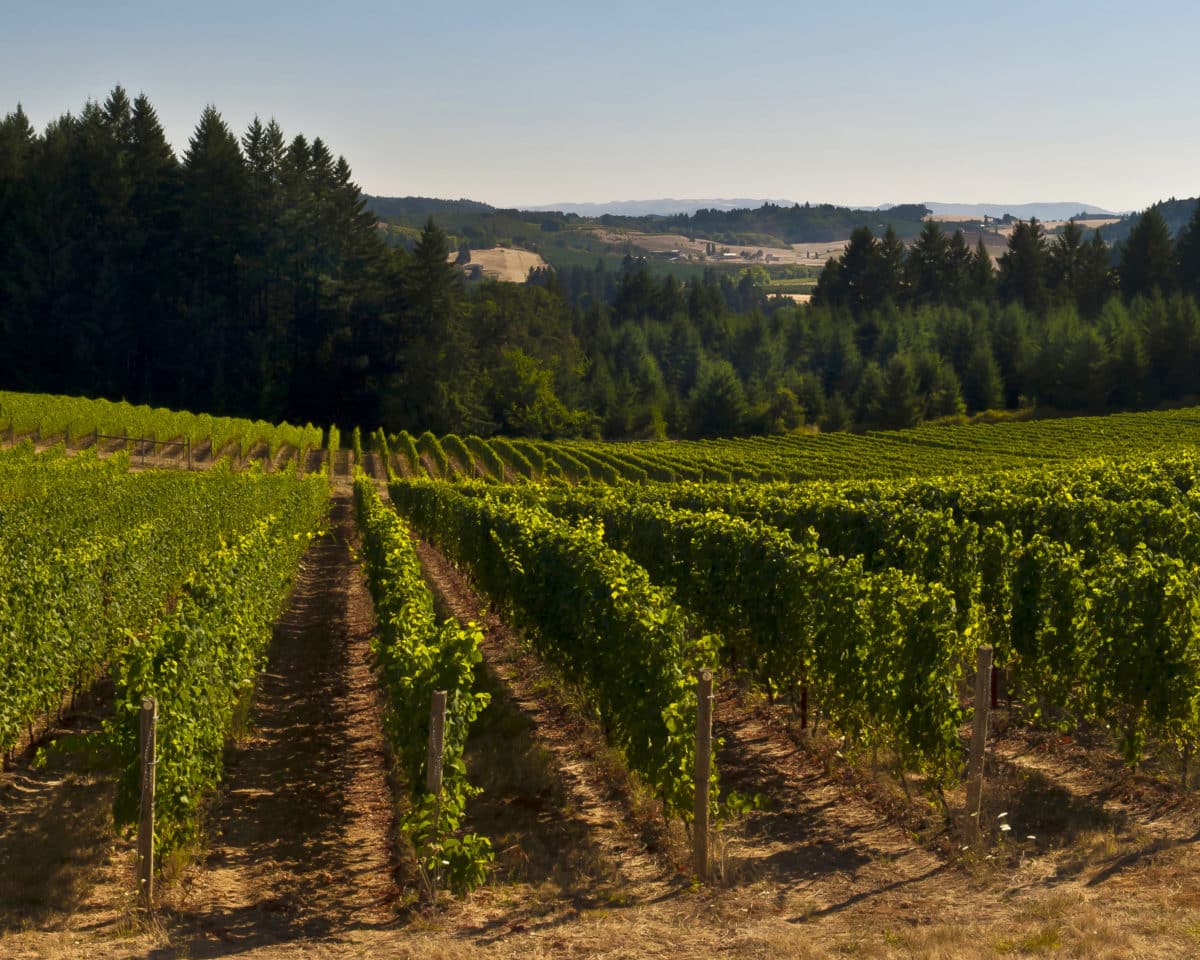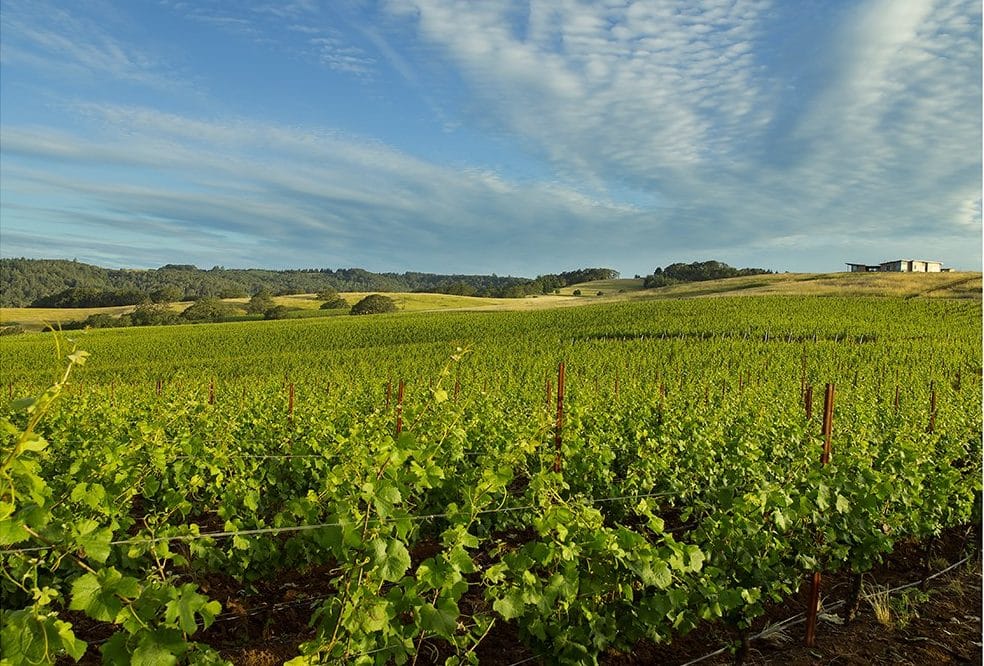The area now known as the Willamette Valley, Oregon, is enriched by the silt left behind from floods of 15,000 years ago. At that time, rising climatic temperatures weakened a glacial ice dam holding back a wall of water that exceeded 2000 feet. When the ice dam gave way, a torrent of water made its way through the valleys and draws, gathering speed and tumbling boulders and tons of rich silt around in its maelstrom. It swept across the Columbia valley, funneling through the natural lava corridor formed millions of years before. At the Pacific Ocean it slowed and settled. Heavier, richly mineralized silt sank to the bottom to rest on the slopes of ancient volcanoes and slabs of continental shelf. Up north, the air cooled and ice began to form again. With the next warming cycle, the process repeated itself. These events came to be known as the Missoula Lake Floods, and continued over the course of thousands of years.
Those soils on the slopes of ancient volcanoes — today covered in rich farmland and acres of Douglas fir — and the current climate of the valley combine to create an environment perfect for growing countless varieties of plants. Huge tracts of land are reserved for the growing of grass solely for the purpose of harvesting its seeds; many more thousands of acres are in filbert production; and it seems as though everyone has a garden that issues forth its own torrent of vegetables, berries, and flowers each time the weather warms and the rains cease for a little while.
More and more, though, the hillsides are becoming blanketed in row after row of vines jutting from the ground, their tendrils seeking the sun. These vines leaf, break buds, and dangle the highly prized yet surprisingly delicate pinot noir grape. The same elements of land and climate that make this area the grass seed capital of the world also produce world-class pinot noir grapes. But while the grass growers may not have a name for how the unique combination of dirt, air and water is expressed in their bounty harvested every summer, wine makers do. It’s called terroir.
Terroir is a funny thing. It’s not merely the rich Missoula flood-deposited soil the famous pinot noir grapes are grown in, not just the perfect southern-facing basalt slopes they run headlong down. It’s certainly not only the just-right warm days and cool nights they are exposed to during the dry Oregon growing season, nor the Van Duzer winds that howl in from the coast, drying the grapes — preventing disease and rot — and cooling them, and not simply the manipulations of expert wine makers, intent on their own expression of the terroir. It’s all these things. Some wine makers believe that the pinot noir grape is the grape for expression of place, which is the short way of defining what terroir is. The grape, thin-skinned and fickle as it is, has a way of letting you know where it’s from.
But there are those who blame the Missoula Floods for too much terroir.

There can be inconsistency and confusion when identifying terroir in a geographic area. In an effort to provide order within the chaos, Oregon introduced designations of American Viticultural Areas (AVAs). Later, sub-appellations were introduced to further the classifications. There now exist 17 unique AVAs within the state, most of which are sub-appellations of larger areas.
Dan Warnshuis is the president of Ribbon Ridge Winegrowers, an association formed, in its words, to “promote, enrich and protect the prestige of Ribbon Ridge and to support our members and community.”

At his modest Utopia Vineyard that sits overlooking the valley, Dan urges those with an interest in wine to focus not on terroir, exactly, but on the sub-appellations of the Oregon AVAs, of which the Willamette Valley is the most famous one. Wines made from these sub-appellations each have personalities and traits that are indicative of their origin. The McMinnville AVA, for instance, is an aberration of the traditional pinot noir made in the Willamette Valley. Instead of being light bodied both in color and in taste, it tends toward the more structured, with savory, herbal flavors and black fruit at its heart. The color, too, reflects a tannic structure, ranging into rich reds and near-purples. On the other hand, wines from the nearby Dundee Hills AVA are an expression of their own special soils, aspect, and climate, and tend toward an open fruitiness, lighter in color and structure, too.
But there are those who don’t believe in terroir.
Jason Lett looks cool, and not a day over thirty. Or maybe not a day over forty; it’s hard to tell. His blue eyes stay shaded by his Stetson-brand newsboy cap. A daffodil-yellow sweater and dark blue button down lend a professorial air, while jeans over hiking boots call attention to the fact that he works the land for a living. On the topic of terroir, he calls himself an agnostic, finding the suggestion of Oregon even having terroir to be somewhat absurd.
The reason for this — because if terroir is defined only as the expression of place, Oregon wines definitely have it — is that, unlike the wines of Burgundian France, where the concept of terroir is believed to have originated, Oregon wines just haven’t been around long enough to be consistent in their representation of the place their grapes are grown. In fact, they’ve been in production only since the 1970s, so vintners in Oregon have been crafting these wines for, at most, one and a half generations.
Though Eyrie Vineyards, begun by Jason’s late father, the pinot pioneer David Lett, has established itself as a respected brand in the Oregon wine market and shows no sign of slowing down, there are still challenges. In particular, Jason is concerned about wine makers not taking the craft seriously. He says that arrogance will kill Oregon wines, and that if people plant only to see what they can “spin,” there’s little hope that Oregon wines can survive for the long-term.

Again, the problem with Oregon wine is that there hasn’t been enough wine made yet to firmly cement its status. With Oregon’s efforts to make a name for itself in the international wine scene, its version of terroir — whether you believe in it or not — simply can’t compete with those of France and Italy, though its wine can and does. As Jason noted, Oregon has had only a brief period of wine making compared to the centuries that France has, so Oregon vintners have had to become creative with how their wine is distinguished from another. As Jason pours me a glass of the 1986 vintage bottled by his late father, I get the impression that Jason wants us to focus on timeless, well-crafted wine, enjoy the wine for itself, and forget about terroir all together.
But then, finally, there are those wine makers who say Oregon’s terroir is just right.
Emily Terrell and Tresider Burns from Brittan Vineyards believe in terroir. Emily is the cellar supervisor and, like Jason Lett, appears ageless, open, and cheery about her job and opinion on terroir. Her co-worker Tresider, or Tres, is the associate winemaker — scientific and boyishly lanky. They both work closely with the owners, Robert and Ellen Brittan, to produce wines that are careful representations of the McMinnville AVA and what they believe is its distinct terroir. During our hour and a half interview (followed by a tasting of three exquisite pinot noirs), they carefully and patiently explain to me that terroir does, indeed, exist in Oregon wines, it just depends on what your definition of terroir is. Tres describes it as being “the reflection of site,” and Emily follows that with the eloquent notion that “it’s the convergence of all the things that make a place a place.” The climate, the people, the soils all do work to create terroir. Emily believes that while Oregon wines are young in a relative sense, they have terroir because they possess certain qualities that are hard to mask. The idea of Oregon terroir persists.
Even if Oregon wines are experiencing rapid growth and well-deserved attention, the Willamette Valley is still a long way from becoming the next Sonoma County. Which doesn’t seem to bother anyone. It still feels like a family affair, a sentiment echoed by most wine makers I’ve spoken to. Though they’re unrelated, Emily and Tres could be sister and brother. For an hour and a half we puzzle through the terroir matter and other topics, ranging from the problem of eucalyptus in Australian wines to the benefits of grafted roots vs. own-rooted stock, to phenolic ripeness. We ponder the idea of terroir and all the elements associated with it. Finally, it’s time to drink. Emily and Tres are two sets of many hands that go into the process of making this wine, and they are intensely proud of it — as intense as the wine is itself. It’s a shock to the mouth after the light-bodied pinots I’ve had — rich and savory. I don’t know if it tastes like it’s supposed to, like McMinnville AVA terroir, or like fruit or wind or lava flow or flood waters or 50 million year-old bedrock. It’s all so much to take in that there’s really only one thing left to do — drink the wine and find terroir for myself. ![]()
